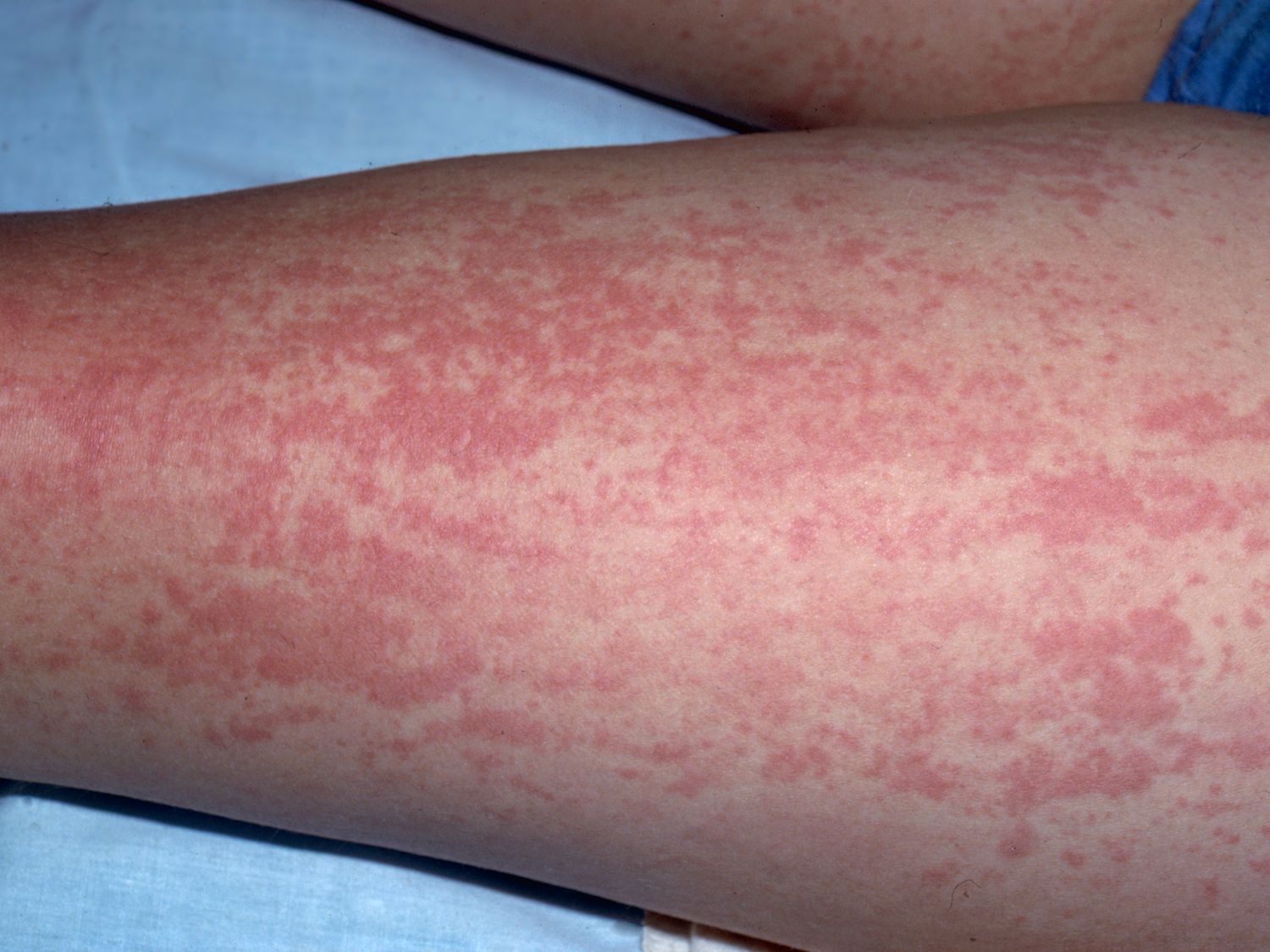Image IQ: Erythematous rash
A 28-year-old woman visited urgent care complaining of an erythematous rash. She also had a sore throat, spiking fever and arthralgias. What's your diagnosis?
Photo courtesy of VisualDx.

A 28-year-old woman visited urgent care complaining of an erythematous rash. She also had a sore throat, spiking fever and arthralgias. When the PA who examined her stroked her skin firmly, a wheal and flare appeared. However, when the doctor arrived for her exam, the skin wheal had almost disappeared.
This patient is showing symptoms of:
A. Drug hypersensitivity
B. Infectious mononucleosis
C. Cytomegalovirus
D. Adult-onset Still’s disease (AOSD)
See the differential diagnosis page on VisualDx to aid in your selection.
See the next page for the answer.
ANSWER: D) Adult-onset Still’s disease (AOSD)
Adult-onset Still disease (AOSD) is a rare multisystem inflammatory disorder seen in young adults, typically before the age of 30, and occurring more commonly in women than men. The etiology of AOSD is currently unknown but hypothesized to be autoinflammatory with a component of genetic susceptibility. The disease shares only some of the signs and symptoms of pediatric Still disease (systemic-onset juvenile rheumatoid arthritis) and has many unique clinical features.
AOSD is characterized by spiking fevers that typically peak in the late afternoon or early evening, a pink or salmon-colored evanescent rash, polyarthralgia, hepatosplenomegaly, lymphadenopathy, and sore throat. Fever, rash, and arthralgias occur in most patients. Arthralgias and arthritis typically affect the knees, ankles, and wrists.
There are 3 different patterns in the clinical evolution of AOSD. The monocyclic pattern is self-limited and characterized by one flare of variable duration followed by complete remission. The polycyclic pattern is marked by 2 or more episodes with intervening symptom-free periods. The chronic articular pattern is characterized by severe joint manifestations that lead to joint-space narrowing and destruction. AOSD can also have serious systemic complications including serositis, chronic arthropathy, and macrophage activation syndrome. Late carpal ankylosis occurs in approximately 25% of patients and represents a distinct clinical feature differentiating AOSD from rheumatoid arthritis.
For more information about this diagnosis, including ICD 10 codes, visit VisualDx.
DISCLOSURE: This quiz was provided courtesy of VisualDx.